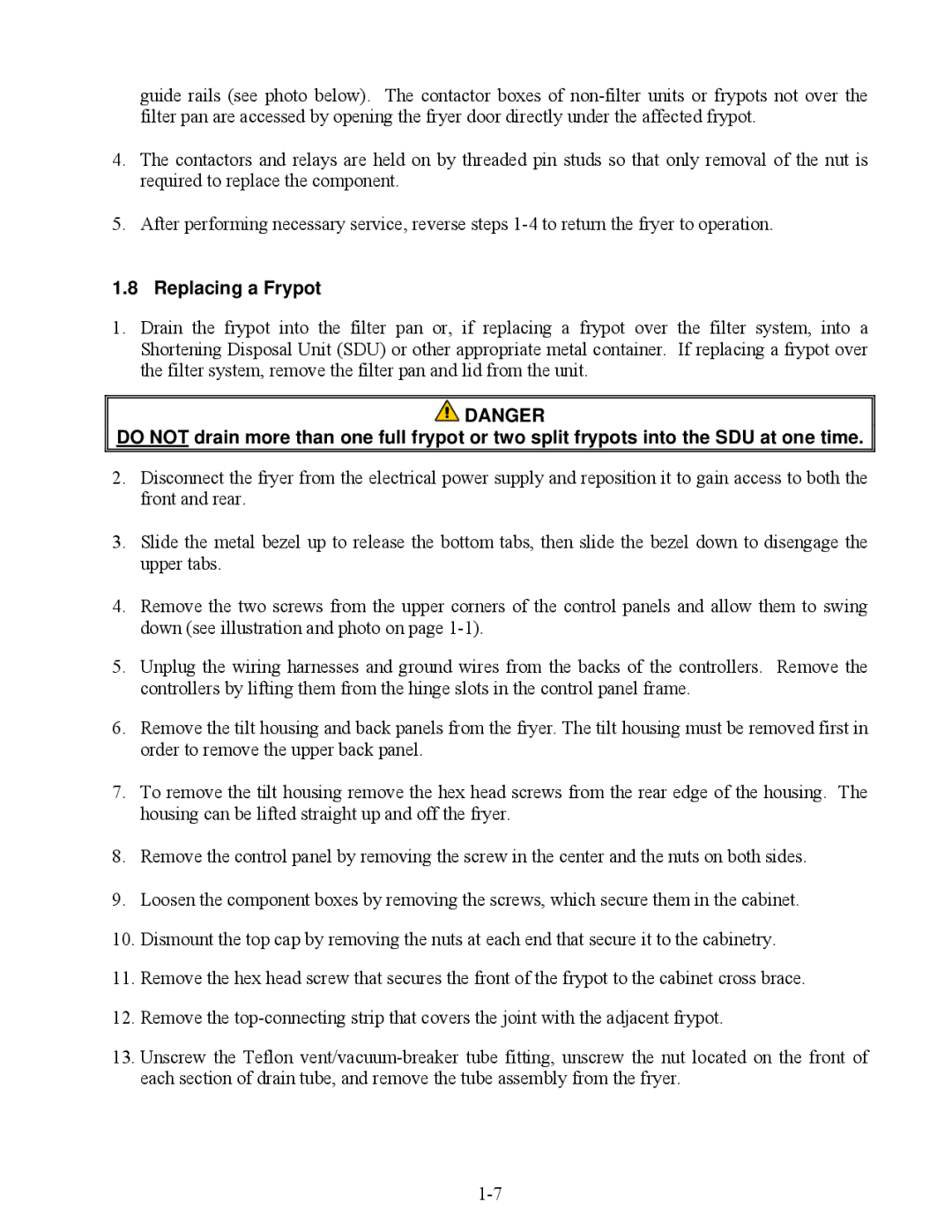RE80 specifications
The Frymaster RE80 is an advanced commercial frying solution that combines efficiency, durability, and innovation. Designed for high-demand kitchen environments like restaurants and fast-food chains, the RE80 stands out for its ability to deliver consistent frying results while optimizing energy usage.One of the main features of the Frymaster RE80 is its efficient oil management system. This system ensures that oil is filtered continuously, prolonging its life and maintaining the quality of fried foods. The filtration process not only reduces oil consumption but also minimizes the presence of food particles, ensuring that every batch of fries, chicken, or seafood comes out crispy and delicious.
The RE80 is equipped with a state-of-the-art digital control panel, allowing operators to adjust frying temperatures and times with precision. This technology contributes to better food quality and consistency by enabling users to program specific frying cycles for different menu items. The panel also includes built-in diagnostics that provide real-time feedback on machine performance, alerting operators to potential issues before they become problems.
The Frymaster RE80’s design prioritizes safety and ease of use. It incorporates safety features such as an automatic shut-off system and a cool-to-the-touch exterior to prevent burns during operation. The unit is ergonomically designed to facilitate easy loading and unloading of baskets, making it more user-friendly for busy kitchen staff.
In terms of capacity, the RE80 is robust, allowing for a high volume of food to be fried simultaneously. This feature is crucial for establishments that experience large customer volumes, ensuring that service remains swift and efficient even during peak hours.
Furthermore, the Frymaster RE80 is built with durability in mind. Constructed from high-quality materials, it can withstand the everyday rigors of a commercial kitchen. The unit’s components are designed for easy maintenance, with quick access to filters and oil drains that simplify routine cleaning tasks.
Environmental considerations also play a role in the Frymaster RE80’s design. The machine operates with energy-efficient technologies that reduce its overall carbon footprint, contributing to a more sustainable kitchen operation.
In conclusion, the Frymaster RE80 represents a blend of technology, safety, and efficiency in commercial frying equipment. With its oil management system, digital controls, capacity for high-volume frying, and durable design, it's an ideal choice for foodservice operators aiming to enhance their frying operations while maintaining food quality and operational efficiency.
